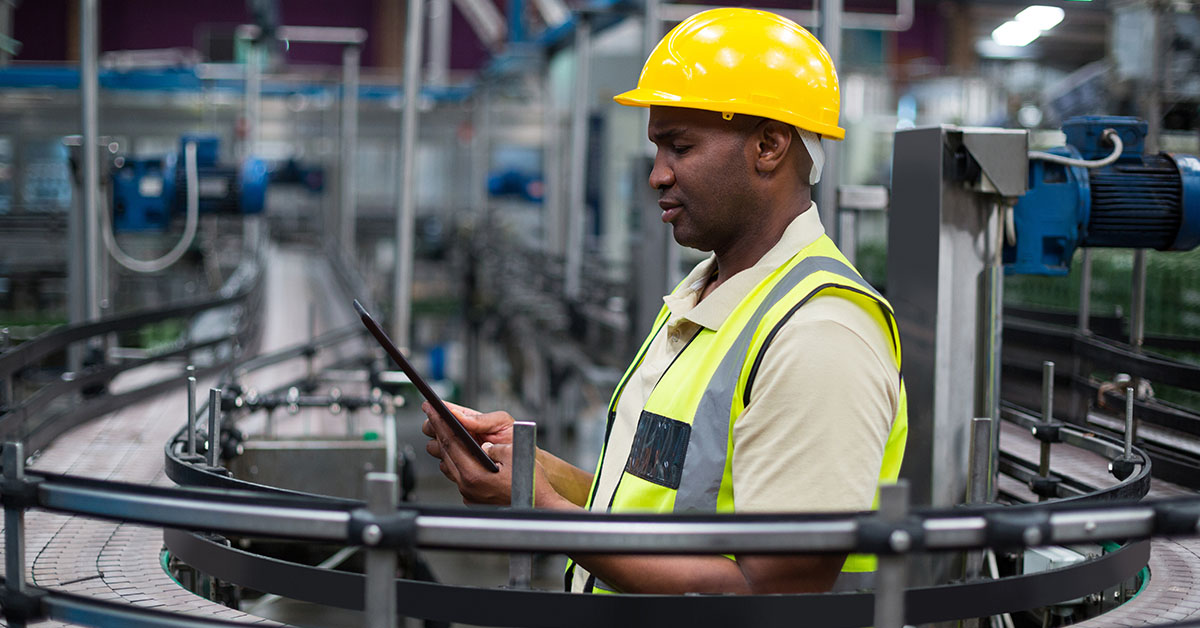
Demystifying digital operations: why OEE isn’t the only tool you need
Overall Equipment Effectiveness (OEE) is widely accepted in the manufacturing industry as a ‘must-have’ for operational effectiveness and improvement. In reality, it is a crucial element for improving digital manufacturing operations, and a powerful diagnostic tool in identifying performance issues on the shop floor.
However, it’s a mistake to assume OEE is a complete solution to your manufacturing problems.
OEE is an important improvement metric that tells us the “why” behind equipment-based losses that can be value-destroying.
It helps to answer questions such as:
-
Why is our equipment failing?
-
Why aren’t we reaching our desired capacity?
-
Why aren’t we producing enough quality product?
Understanding why something happens doesn’t mean we've solved our problems. In other words, we know why our equipment is failing, but what systems can we put in place to stop it from failing again?
OEE doesn’t guarantee behavioral change or adherence to a desired process execution. This leaves a gap between diagnosis and action on the shop floor. By focusing on the machine, an OEE solution fails to see the end-to-end production process.
Emerging digital IoT platforms can ensure jobs, tasks and activities are completed correctly each time, effectively bridging the ‘OEE diagnosis to action’ gap, accounting for machine and human factors, while answering questions such as:
-
What digital tools can we deploy to reduce, monitor, or predict equipment failure?
-
What processes can we improve to reach our desired capacity?
-
How can we empower and enable our operators as well, not just our machines?
-
What Industry 4.0 solutions produce consistently quality product?
These additional digital tools, which help make a smart manufacturing operation, can provide support for task management and fill key areas where OEE falls short – with an ability to measure the delegation, completion, and conformance of tasks across the organization.
In this blog, we’ll explore the value of OEE as an improvement metric and diagnostic tool, and in the process, demystify the use of OEE alone as a silver bullet for optimizing digital manufacturing operations.
OEE – a valuable improvement tool
OEE is considered to be the most crucial improvement metric used in Total Productive Maintenance (TPM) in manufacturing. OEE can provide clarity on the shop floor, identifying the equipment-based “six big losses” that contribute to availability, performance and quality losses.
With OEE, these losses are woven into a singular metric – or score – to illustrate the potential for improvement of an asset such as a production line or piece of equipment. This score is calculated by using the formula:
OEE = Availability x Performance x Quality
The resultant OEE score provides asset visibility and an overall understanding of failure points. For example, looking purely at availability within the equation, a low OEE score may highlight issues with downtime on a factory line.
/OEE.jpg?width=800&name=OEE.jpg) An OEE score (calculated using the formula pictured above) provides us with a valuable metric, but not everything we need.
An OEE score (calculated using the formula pictured above) provides us with a valuable metric, but not everything we need.
According to a 2017 study by Vanson Bourne across four countries and various industries, including manufacturing, 82% of companies experienced unplanned downtime over the prior three years. In the same study, independent research by Aberdeen suggested that the average cost of downtime across all businesses was $260,000 per hour.
However, it’s important to note that there is no perfect OEE score. Each manufacturer’s unique operational goals are different, and a lower or higher OEE score never tells the whole story. It’s not uncommon for operations to adopt OEE, analyze the numbers for a few months, and then wonder – what’s next?
OEE has significant value for manufacturers, but shouldn’t be considered a silver bullet that will see problems go away. Instead, OEE should be seen for what it is – a diagnostic tool for root cause analysis, illuminating inefficiencies within your manufacturing operations –not solving them.
People drive performance
Implementing OEE can be complicated and costly, particularly when investing in a top-range solution. Finding the “perfect” OEE can be daunting, and manufacturers can fall into the trap of focusing on the wrong factors that drive operational performance.
While equipment plays a crucial role in all manufacturing operations, people are the drivers of operational performance. In the same Vanson Bourne study, it was identified that 23% of all unplanned downtime in manufacturing was the result of human error.
/People-drive-performance-3.jpg?width=800&name=People-drive-performance-3.jpg) Whether it's on the factory floor or behind a desk, people drive operational performance.
Whether it's on the factory floor or behind a desk, people drive operational performance.
Workers will make mistakes (that’s beside the point!), but we must highlight the crucial positive role people play in driving performance, and the steps we can take to minimize risk by adopting a less asset-focused operation.
You can (and should!) educate staff on OEE best practices to ensure a smoother transition on the shop floor – but there is a much more cost-effective, easier way to implement OEE all while understanding the human element.
OEE isn’t the only tool you need!
According to Deloitte, smart factory initiatives will triple the productivity of the manufacturing workforce over the next decade. Smart manufacturing – or paperless digital manufacturing operations – are easier than ever to achieve, supported by established and emerging IoT and Industry 4.0 technologies.
You don’t need a complicated OEE solution. Digitalizing your operations can be achieved in a simple, scalable, cost-effective way to maximize overall operational efficiency by intertwining a people-first focus with OEE.
TilliT – bridging the OEE diagnosis-action gap
This is where a real-time digital factory platform such as TilliT comes in – providing a foundation to solve the issues initially diagnosed by even the most basic OEE but then build to something far more powerful. With TilliT, you provide supervisors and operators with the task management tools to gain forward-looking insights and real-time visibility of everything happening in the factory.
/Traditional%20vs%20Digital%20Operations.jpg?width=1191&name=Traditional%20vs%20Digital%20Operations.jpg) TilliT works alongside OEE to transform a traditional factory into an efficient digital operation.
TilliT works alongside OEE to transform a traditional factory into an efficient digital operation.
Now, not only can you identify the root cause of inefficiency, but actually reduce downtime by guiding the operation via an execution workflow, synchronizing machine performance with operator activity, and alerting to non-conformances in real-time before they accumulate and become problematic.
With TilliT’s no-code, simple to set up digital factory platform, you are able to digitalize your operations – empowering all staff to do the right thing at the right time. You also get an OEE system out-of-the-box that is easy to implement and can be embedded into a complete factory workflow.

Enjoyed this post? Don't forget to share!


